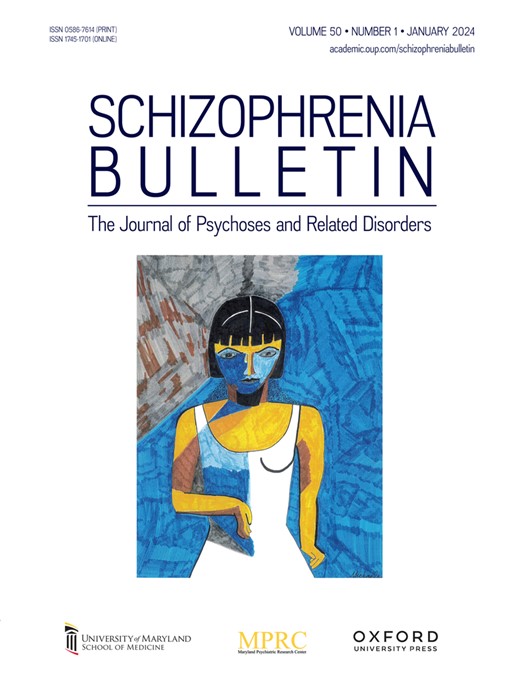44 THE EMOTIONAL IMPACT OF VISUALLY COMMUNICATING DIVERSE REPRESENTATIONS ON PSYCHIATRIC PATIENTS
IF 5.3
1区 医学
Q1 PSYCHIATRY
引用次数: 0
Abstract
Background Mental illness is a disorder of brain function and a disease with serious psychological disorders. Usually, patients’ cognition, emotion, will and action behavior are manifested as continuous abnormalities. For psychiatric patients, seeking treatment and intervention can promote their recovery and social function recovery. At present, a variety of psychological, artistic and social intervention therapy is gradually used as a supplement or even substitute for drugs, and its clinical effect has been widely confirmed. Among them, the diversified expression of visual communication refers to the process of conveying information and emotions through various expressions such as color, graphics, fonts, layout and multimedia elements, which is expected to profoundly affect people’s emotional expression and perception. This study introduces it into the field of psychological intervention for psychiatric patients and explores its emotional impact on patients. Methods 40 patients who met the diagnostic criteria of psychosis were divided into experimental group and control group according to the principle of uniform and random, and the intervention period was set for 6 months. The control group received routine nursing treatment and did not participate in any form of intervention activities, while the experimental group received visual communication diversified expression intervention twice a week during the intervention cycle, and communicated with the visual communication designer through dynamic and interactive design with various elements. The scale was tested before intervention and at 2, 4 and 6 months after intervention. The measurement scales included Difficulties in Emotion Regulation Scale (DERS) and self-rating anxiety scale (self-rating Anxiety Scale). SAS, self-rating depression scale (SDS), and Emotional Intelligence Scale (EIS). Results The comparison results of DERS scale of different subjects before and after intervention are shown in Figure 1. As can be seen from Figure 1, there was no statistical difference in DERS scores between the two groups before intervention (P>0.05), and the subsequent experimental analysis was scientific and effective. After one month of intervention, DERS scores of the experimental group began to decline, and there was a statistical difference compared with the control group (P<0.05). When the intervention time reached 4 months, there was a statistically significant difference between the experimental group and the control group (P<0.01). After the intervention, the experimental group’s DERS score decreased from 68.167 to 48.496. In addition, the scores of SAS and SDS in both groups decreased, but the scores in the experimental group were lower than those in the control group, and the difference was statistically significant (P<0.05). Finally, the total score of EIS, emotional feeling score and ability to understand emotions of oneself or others in the experimental group were significantly higher than those in the control group, with statistical significance (P<0.05). Discussion As a new psychological intervention method, visual communication diversified expression aims to help mental patients improve their understanding ability, cognitive level and regulate emotions through rich visual elements and dynamic effects. The results show that visual communication has a positive impact on the emotions of patients with psychosis, which can not only improve the emotional control of patients, but also inhibit the occurrence of depression and anxiety, so as to achieve the recovery of patients’ various functions and abilities.视觉传达不同表征对精神病患者情绪的影响
精神疾病是一种脑功能障碍,是一种具有严重心理障碍的疾病。通常,患者的认知、情绪、意志和行动行为表现为持续的异常。对于精神病患者,寻求治疗和干预可以促进其康复和社会功能的恢复。目前,各种心理、艺术和社会干预疗法逐渐被用作药物的补充甚至替代,其临床效果也得到了广泛的证实。其中,视觉传达的多元化表达是指通过色彩、图形、字体、布局、多媒体元素等多种表达方式传递信息和情感的过程,有望深刻影响人们的情感表达和感知。本研究将其引入精神科患者心理干预领域,探讨其对患者情绪的影响。方法将40例符合精神病诊断标准的患者按均匀随机原则分为实验组和对照组,干预期为6个月。对照组接受常规护理治疗,不参与任何形式的干预活动,实验组在干预周期内每周2次接受视觉传达多元化表达干预,通过多元素的动态交互设计与视觉传达设计师进行沟通。分别于干预前、干预后2、4、6个月进行量表测试。测量量表包括情绪调节困难量表(DERS)和焦虑自评量表(自评焦虑量表)。SAS、抑郁自评量表(SDS)、情绪智力量表(EIS)。不同被试干预前后的DERS量表比较结果见图1。从图1可以看出,干预前两组患者的DERS评分差异无统计学意义(P>0.05),后续实验分析科学有效。干预1个月后,实验组的DERS评分开始下降,与对照组比较有统计学差异(P<0.05)。干预时间达到4个月时,实验组与对照组比较差异有统计学意义(P<0.01)。干预后,实验组的DERS评分由68.167降至48.496。此外,两组患者SAS、SDS评分均下降,但实验组低于对照组,差异有统计学意义(P<0.05)。最后,实验组的情绪感知总分、情绪感受评分、对自己或他人情绪的理解能力均显著高于对照组,差异均有统计学意义(P<0.05)。视觉传达多元化表达作为一种新的心理干预手段,旨在通过丰富的视觉元素和动态效果,帮助精神病患者提高理解能力、认知水平和调节情绪。结果表明,视觉沟通对精神病患者的情绪有积极的影响,不仅可以改善患者的情绪控制,还可以抑制抑郁和焦虑的发生,从而实现患者各项功能和能力的恢复。
本文章由计算机程序翻译,如有差异,请以英文原文为准。
求助全文
约1分钟内获得全文
求助全文
来源期刊

Schizophrenia Bulletin
医学-精神病学
CiteScore
11.40
自引率
6.10%
发文量
163
审稿时长
4-8 weeks
期刊介绍:
Schizophrenia Bulletin seeks to review recent developments and empirically based hypotheses regarding the etiology and treatment of schizophrenia. We view the field as broad and deep, and will publish new knowledge ranging from the molecular basis to social and cultural factors. We will give new emphasis to translational reports which simultaneously highlight basic neurobiological mechanisms and clinical manifestations. Some of the Bulletin content is invited as special features or manuscripts organized as a theme by special guest editors. Most pages of the Bulletin are devoted to unsolicited manuscripts of high quality that report original data or where we can provide a special venue for a major study or workshop report. Supplement issues are sometimes provided for manuscripts reporting from a recent conference.
 求助内容:
求助内容: 应助结果提醒方式:
应助结果提醒方式:


